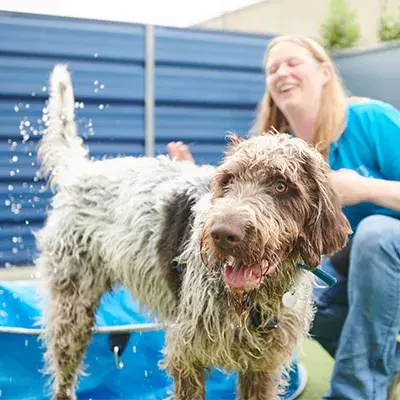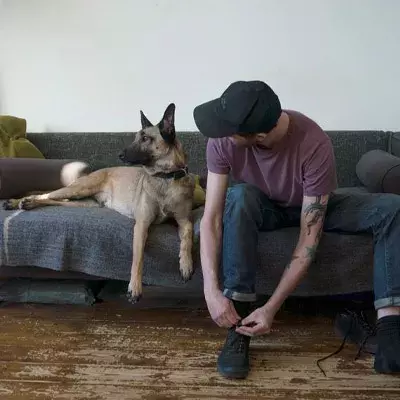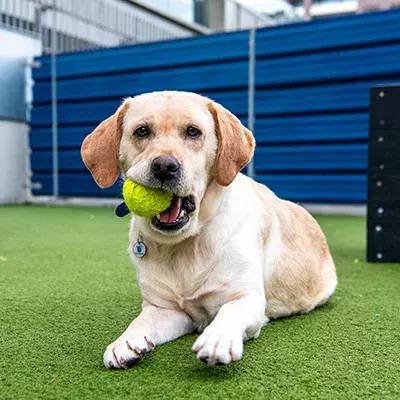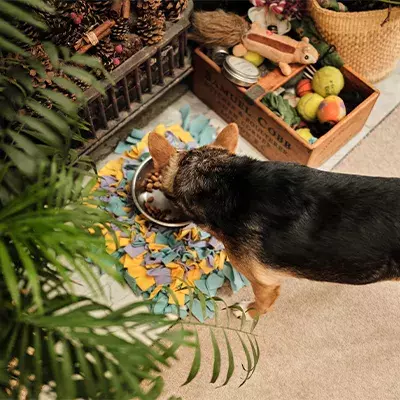As your dog gets older, you may notice them start to change, things like their habits and behaviour, as well as the way they move, and even the way they look. With this, we as owners need to adjust our expectations of them, make certain changes in order to help them, and learn to recognise different signs.
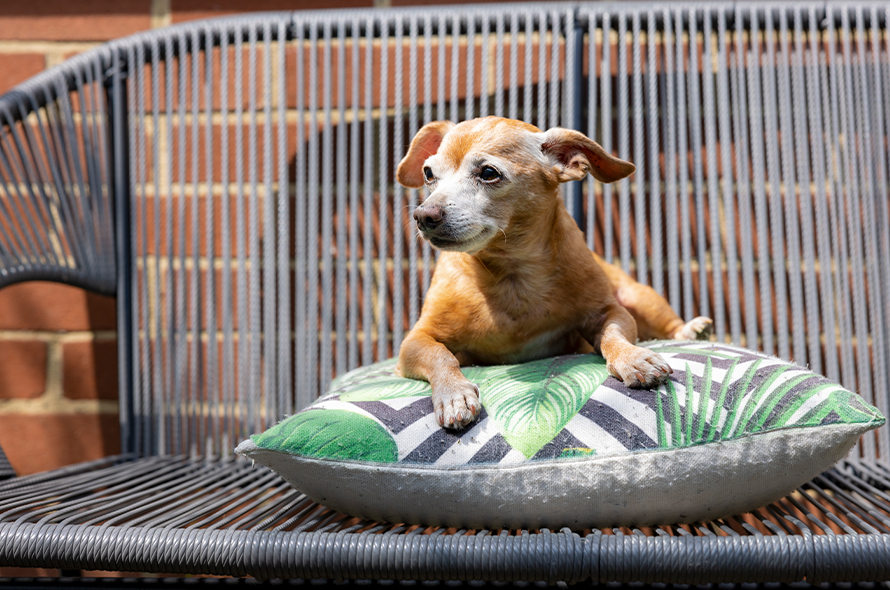
The breed and size of your dog will determine when they’re considered senior. For large dogs, it’s around age 6 or 7 as they generally have a shorter life expectancy, while for smaller dogs it can be as late as 10 to 12 years of age due to their longer life expectancy.
Physical changes in senior dogs
Some potential signs of aging in your dog include:
- Changes in mobility, or slowing down
- Struggling with stairs or being less keen on jumping up
- Hearing difficulty, or loss of hearing
- Stiffness when getting up
Not being able to see things as well as they used to, for example bumping into things that are in the same place they’ve always been
Whatever their age, you should always speak to your vet if you notice any changes in your dog or have any other concerns about their health. Whilst we sadly can’t stop the ageing process, there are things your vet might suggest to help support them through this stage of their life and treat specific conditions they may develop.
Even if you’re not seeing these signs, it is highly recommended that you check in with your local veterinary practice to see if they offer additional support for owners of older pets.
Behavioural changes in senior dogs
As your dog gets older and is experiencing physical changes, it can make them feel more vulnerable and anxious and as such you may find that they become less tolerant and more irritable. They may find things that previously didn’t worry them are now a bit scary, and they may start to react in situations you wouldn’t have expected. Your dog may also start to become less tolerant of children or dogs in the home as they can't move themselves away as quickly or are anticipating pain if another dog jumps on them or children stroke them too roughly.
With this in mind, we need to make sure we give our senior dog more space and plenty of safe places to go when they are feeling overwhelmed or irritable. It’s important to remember it’s not their fault, so we shouldn’t tell them off. Instead, we should give them time and space away from any visitors or other animals.
An older dog may also start to react to people coming into their space when they are relaxed or resting. As our dogs age, they can be more prone to sleep startle as they may be in a deeper sleep and not hear people approaching. We need to understand and respect this by making sure we leave them alone when they are sleeping.
Adapting your dog’s routine
It is important to adapt our routines to make our pets’ lives more comfortable as they age. You may need to adapt your exercise routine to fit with what your dog needs and can handle.
Walks and exercise
Look at taking shorter but more frequent walks throughout the day instead of a single long walk. Ensure you give your dog plenty of breaks during the walk so they can rest if needed. You can also speak to your vet for advice on the best exercise routine for your dog as they get older. A great way to help your dog continue to exercise without putting excess strain on their ageing joints is hydrotherapy.
It is always recommended to keep your dog at their healthy weight. As they age it is especially important to ensure they stay in good body condition and don’t become overweight, as this can contribute to several health concerns.
Mental stimulation
Mental stimulation is particularly important for senior dogs as their physical abilities may be reduced. We can add low impact activities like search games, food enrichment and trick training, as these behaviours don’t put extra strain on the joints.
Adapting your home set up
It is important to consider the setup of our homes and how we may need to adapt them as our dogs get older.
Ramps and stairs
A ramp or small set of stairs can be useful to assist pets who are not as able to jump onto the bed or sofa as they used to be. If you like to take your dog in the car, a ramp can also help your dog to get in and out more easily, while putting blankets or bedding down may make the ride more comfortable.
When considering ramps and steps, it is important to get your dog used to going up and down them, as some dogs may fear new objects or might avoid using them. It's also a good idea to set up a nice, cosy dog bed that can be placed on the floor near where your dog likes to settle for when you might not be around to assist them in getting onto sofas and beds.
If your dog is struggling to get up or down the stairs without your help, it may be a good idea to block the stairs off with a baby gate so that they don’t injure themselves.
Flooring
When it comes to mobility, it’s important to consider the flooring in your home. Wooden or laminate flooring can be slippery for senior dogs, so non-slip rugs can help provide a stable and comfortable footing for them to move around on. Similarly, if you normally give your dog a bath at home, make sure you use a non-slip mat in the bathtub to help them feel secure and prevent them from slipping around.
Although we cannot stop the aging process, with extra support at home along with veterinary care, advice, and treatment of specific conditions, there are many things we can do to help maintain our dogs’ quality of life in their twilight years.
